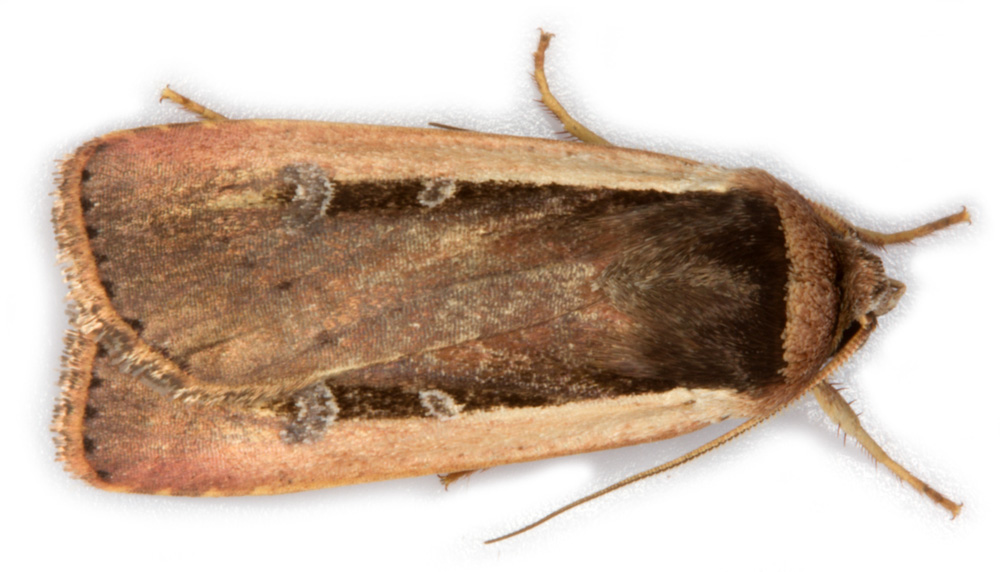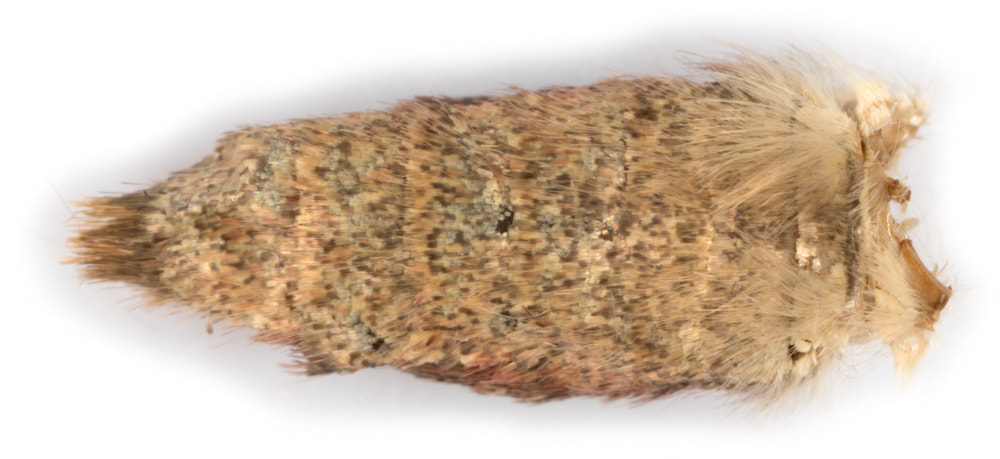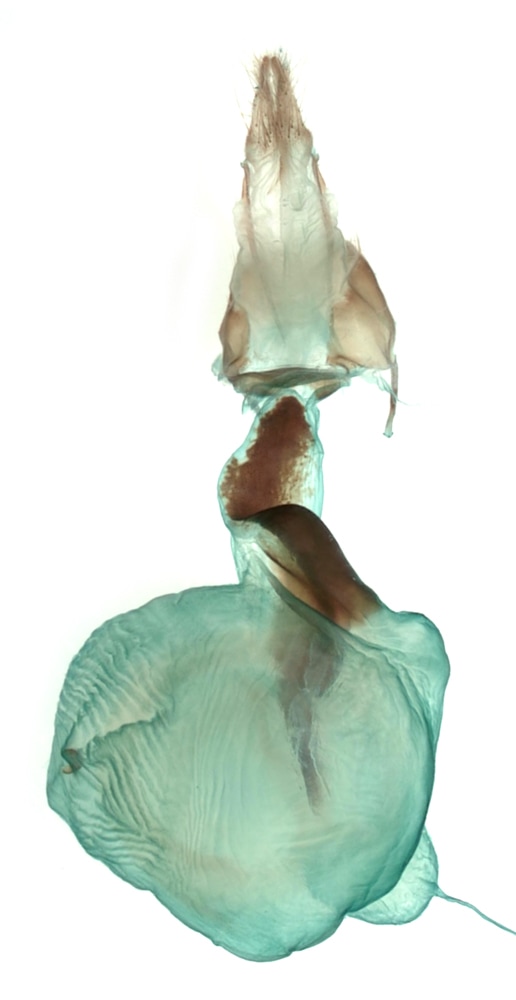Ochropleura |
References: Waring & Townsend (2003), MBGBI9 and a Facebook posting by Dave Grundy that refers in turn to a series collected on St Agnes in autumn 2015 and to "Fibiger" - presumably Noctuidae Europeae and "Skinner" - presumably Colour identification guide to moths of the British Isles.
1. Status, flight season, location and size |
O.plecta (Flame Shoulder) |
O.leucogaster (Radford's Flame Shoulder) |
Status |
Common resident |
Rare migrant |
Flight season |
April - September with peaks May-Jun and Aug |
Late September to November |
Location |
Throughout GB |
South coast of England |
Wingspan |
28-34mm (MBGBI9) |
32-36mm (Fibiger), 34-37mm (Skinner) |
Forewing length |
12-15mm (W&T) |
13-16mm (W&T) |
2. Dorsal surface of abdomen |
O.plecta (Flame Shoulder) |
O.leucogaster (Radford's Flame Shoulder) |
Ground colour |
Earth brown |
Pale brown |
Colour of hairs on anterior segments |
Brown |
White |
Colour contrast with thorax |
Little contrast |
Noticeable contrast |
Regarding O.leucogaster, MBGBI9 states "...has a white patch on the anterior abdominal segments" and W&T state "...white hairs around front of abdomen (the specific name means 'white stomach')". The whiteness is only on the dorsal surface - and so cannot be seen on the resting moth and may be difficult to see on a live moth. The specific name is actually somewhat confusing as I would look for a 'white stomach' on the ventral surface!
3. Forewing |
O.plecta (Flame Shoulder) |
O.leucogaster (Radford's Flame Shoulder) |
Extent of pale costal streak |
Shorter - fades proximal to or level with kidney mark |
Longer - fades distal to kidney mark |
Dorsal margin of pale streak - at wing base |
Extends slightly along a vein (?V6) midway between wing base and oval mark |
Straight and parallel to costa |
Extent of dark median streak distal to kidney mark |
Usually just a small dot |
Usually a pointed streak about as long as the kidney mark |
Pale pointed streak distal to kidney mark |
Absent |
Often present and outlines the dark pointed streak when this is present |
Size of oval mark* |
Larger |
Smaller |
Ground colour |
Reddish-brown |
Greyish-brown |
* There is an impression of a difference here but I cannot find any absolute (as opposed to relative) way to describe it.
I am unconvinced by any consistent difference in: 1) colour of the flame shoulder, this seems to darken with wear in both species; 2) size of the kidney mark, this seems very similar and certainly overlaps; 3) shape of the oval mark, this seems to be variable in both species
I am unconvinced by any consistent difference in: 1) colour of the flame shoulder, this seems to darken with wear in both species; 2) size of the kidney mark, this seems very similar and certainly overlaps; 3) shape of the oval mark, this seems to be variable in both species
4. Patagia & Tegulae |
O.plecta (Flame Shoulder) |
O.leucogaster (Radford's Flame Shoulder) |
Patagia colour & contrast with thorax |
Darker, little contrast |
Paler, notable contrast |
Colour "link" to pale costal streak |
Interrupted (lateral portion of tegulae dark) |
Continuous (lateral portion of tegulae pale) |
I have found these to be the most consistently reliable features to see on the live moth in resting posture.
I cannot find any descriptions of the genitalia in the cited references and only O.plecta is shown at Moth Dissection.
5. Male genitalia |
O.plecta (Flame Shoulder) |
O.leucogaster (Radford's Flame Shoulder) |
6. Female genitalia |
O.plecta (Flame Shoulder) |
O.leucogaster (Radford's Flame Shoulder) |
Dave Grundy's posting is shown below. Note that the forewing lengths shown here are incorrect (the 13-16mm shown for Flame Shoulder should be applied to Radford's Flame Shoulder and the 17-21mm shown for Radford's Flame Shoulder has been taken from Northern Rustic - the next species in W&T). I am not convinced by the hindwing features listed here.
Page published November 2016 | amended 31/12/2017















